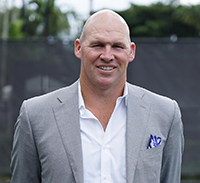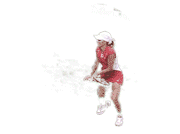The Coach is the System: Replacing Chaos with Clarity on Court
Kyle LaCroix
Every coach has their quirks — the way they feed, speak, organize a warmup. But underneath that, there’s something deeper that determines success: structure. Not the drills themselves, but the intentionality behind them. Not just what we coach, but how we coach. That’s the system.
And for far too long, many coaches have tried to run programs on personality alone. On energy, experience, instinct. But charisma is not scalable. What’s needed — and what the best coaches build — is a repeatable system. Remember, good players don’t adapt to a system, good systems can adapt to a player.
With that said, in this article, I want to make a bold but necessary claim: The coach is the system. If your players are confused, inconsistent, or disconnected, it’s rarely a player problem. It’s a structural one. And that structure always begins with the coach.
I’ve spent two decades coaching across individual players, private clubs, national conferences, and elite academies. I’ve coached from inside the storm and helped coaches rebuild from the ground up. The difference between burnout and sustainability? Between chaos and clarity? It isn’t just a better forehand. It’s a better framework.
The Problem with Personality-Driven Coaching
Many coaches — especially those early in their careers — lean on passion and presence. And that’s admirable. Passion is often what draws players in. But it’s not what keeps them. Nor is it what scales a program, develops staff, or creates long-term trust.
In a personality-driven model:
- Sessions are reactive, not proactive
- Feedback is inconsistent
- Progress tracking is non-existent
- Players depend on the coach’s energy to stay motivated
- Burnout is common — for the coach and the players
I’ve walked into clubs where a top coach was a “rockstar” — adored by players, always fully booked, praised by management. But the moment they went on vacation or left the club, the program crumbled. Why? Because there was no system behind the person. No development pathway. No operating procedure. No bench strength.
Personality is an ingredient. But it’s not the meal. Without structure, even the best coaches eventually hit their ceiling.
What a Coaching System Really Means
When we say “system,” we don’t mean rigid rules or cookie-cutter curriculums. A system is simply a set of intentional, repeatable processes that create clarity for players, consistency for coaches, and continuity across a program.
A coaching system answers:
- What is the goal of this session?
- How does it connect to the player’s long-term development?
- How is progress measured?
- How is feedback delivered?
- How does this session align with others in the program?
A great system leaves room for adaptation, spontaneity, and connection. But it provides a stable spine so that the coach isn’t reinventing the wheel every hour.
Systems liberate coaches. They don’t constrain them. When you’re no longer relying on memory or mood to determine the session, you free up energy to be present, to observe, to listen.
That’s not robotic. That’s intentional.
Systems in Action — Real Coaching Scenarios
Scenario 1: Junior Pathway Clarity
A mid-sized club I consulted with had high junior participation — but zero retention past age 14. Players plateaued, parents got frustrated, and coaches blamed effort.
We built a 4-stage junior development pathway:
- Exploration (Ages 4–8) — Focused on fun, movement, and court comfort
- Foundation (Ages 9–11) — Introduced consistent rallying, tactical awareness, teamwork
- Execution (Ages 12–14) — Emphasized pressure drills, competitive play, personal routines
- Excel (Ages 15+) — Match play, mental skills, periodized training blocks
Each level had clear benchmarks, themed lesson plans, and a parent communication cadence.
The result? Retention jumped by 40% in one year. Coaches were aligned. Players had direction. And parents stopped asking, “So… what’s next?”
Scenario 2: Assistant Coach Development
Another club had a talented but underperforming staff. The director felt like they had to micromanage everything. When we evaluated the environment, it was clear: no one knew what was expected.
We created an internal coach training system:
- Bi-weekly development huddles and drill and corrective technique swaps
- Shadow-to-lead teaching progression
- Core coaching competencies (feedback, engagement, technical language)
- Monthly observations and peer reviews
Coaches went from passive assistants to empowered contributors. The director no longer needed to run every session. The system held the standard, not the director’s constant supervision.
Designing Your System — A Practical Framework
Whether you’re a solo coach or running a full racquets department, the principles of system-building apply. Here’s a starting framework we use at SETS:
- Vision → Curriculum
- What kind of players are you trying to develop?
- What values matter most in your environment?
- Curriculum maps for different ages and levels
- Seasonal planning documents
- Themed training blocks
- Session Design → Progression Planning
- Every session should serve a developmental theme (e.g., neutral ball control, building pressure resilience)
- Include warm-up routines, progressions, and competitive applications
- Cooperative → Competitive
- No target → With target → With consequence
- Shadow → Live ball → Point play
- Feedback → Reflection Loops
- Create a consistent language of feedback (e.g., “reset,” “shape,” “commit”)
- Use player journals or post-practice debriefs
- Build in self-assessment: “What did you notice? What did you learn?”
- Culture → Modeling
- Systems thrive where culture supports them
- Coaches must model energy, professionalism, emotional regulation
- Celebrate not just performance — but process behaviors
From that vision, reverse-engineer:
Use progressions like:
What the Best Coaches Get Right
The best coaches I’ve ever met — from grassroots to Grand Slams — are not chaotic geniuses. They’re architects.
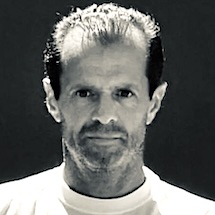
Carlos Rodríguez, longtime coach of Justine Henin, ran meticulous, disciplined practices where every drill had a purpose, every behavior was modeled, and every detail mattered. The coaches who worked under him accepted the attention to detail because they saw the results.
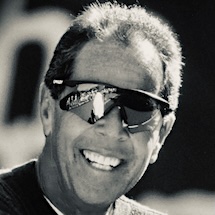
Nick Bollettieri, while more expressive, built the Nick Bollettieri Academy not just on charisma — but on a scalable system of coaching, communication, and development that allowed multiple coaches to learn, grow and build into better coaches and take on the rigors of developing the future.
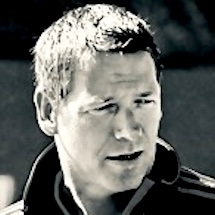
Sven Groeneveld, an accomplished coach, leader and sage of numerous professional players, his progressive and player centered approach is respected and proven in getting results. His work, wisdom and principles go far beyond the court and created strong bonds with his players that they respect, regardless of outcome.
These coaches didn’t just show up. They built systems that make those around them better.
Soul + Structure — Why This Matters Now More Than Ever
Let’s be honest — tennis is evolving. Players are savvier. Parents are more involved. Clubs are under pressure to deliver retention and results. Coaches are at higher risk for burnout than ever.
We don’t need more charisma. We need more clarity.
A coach with a system:
- Knows what they’re building
- Creates stability and confidence for players
- Makes better use of time
- Trains and teaches others to grow
- Frees themselves to do their best work
This isn’t cold. It’s soulful. Systems create space for presence. When the structure is in place, you can look your player in the eye instead of looking at your clipboard.
When we say the coach is the system, we’re not saying the coach does it all. We’re saying the coach embodies the structure. Their habits, their communication, their consistency — all of it forms the architecture of the player’s experience.
And players don’t just remember your drills. They remember how you made them feel within the system you built.
Build It Brick by Brick
There’s a reason some programs thrive long after a head coach leaves — and others fall apart within weeks. Systems scale. Personalities burn out.
Whether you’re feeding from a basket on Court 3 or overseeing a staff of twenty, remember: you are the system.
Start small. Build your session templates. Create your vocabulary. Outline your developmental tracks. Get clear on your own values.
And then teach from that clarity. Because when your players feel safe in the structure, they become free to play, compete, fail, learn, and grow. That’s not just good coaching. That’s great leadership.



